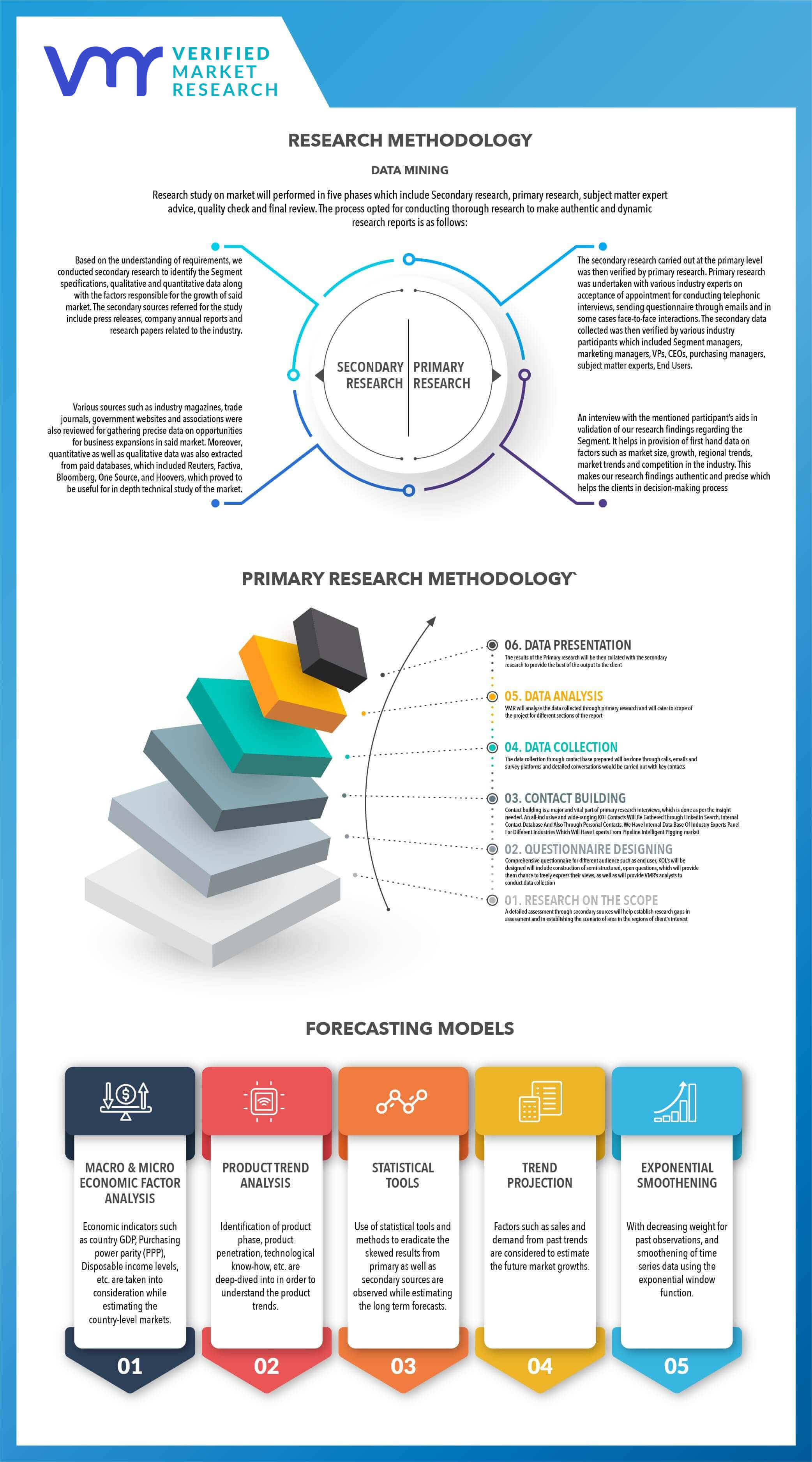
Global Rough Terrain Lift Trucks Market Size By Type, By Application, By End-User, By Geographic Scope And Forecast
Report ID: 451370 | Published Date: Oct 2024 | No. of Pages: 202 | Base Year for Estimate: 2023 | Format:




Rough Terrain Lift Trucks Market size was valued at USD 63.7 Billion in 2023 and is estimated to reach USD 86.8 Billion by 2031, growing at a CAGR of 3.5% from 2024 to 2031.
The market drivers for the Rough Terrain Lift Trucks Market can be influenced by various factors. These may include:
Several factors can act as restraints or challenges for the Rough Terrain Lift Trucks Market. These may include:
The Global Rough Terrain Lift Trucks Market is Segmented on the basis of Type, Application, End-User, and Geography.
In the rotisserie market, the primary segment categorized by type includes two main sub-segments: diesel-powered and electric-powered rotisseries. Diesel-powered rotisseries are often favored in commercial settings where mobility and high cooking capacity are essential, such as food trucks and outdoor catering. These units provide the advantage of extended operational hours and are suitable for high-demand environments due to their robustness and ability to maintain consistent cooking temperatures. On the other hand, electric-powered rotisseries are increasingly popular in both residential and commercial kitchens, appreciated for their ease of use, efficiency, and lower environmental impact. These units are typically more user-friendly, offering precise temperature control and consistent cooking results, making them ideal for indoor cooking. Additionally, electric models often feature advanced technologies, such as programmable settings and automatic shut-off features, enhancing safety and convenience.
The choice between diesel and electric rotisseries often depends on factors like the intended application, availability of power sources, and specific cooking requirements. As consumers and businesses become more conscious of sustainability, the electric-powered segment is witnessing significant growth, driven by innovations in energy efficiency and design. Ultimately, both sub-segments cater to diverse culinary needs, providing unique advantages that influence their adoption in various settings, from bustling restaurants to home kitchens. Understanding these nuances helps stakeholders in the rotisserie market tailor their offerings to meet evolving consumer preferences and operational demands.
In the rotisserie market, the application segment encompasses several key sub-segments, including construction, agriculture, industrial, and others. The construction sector utilizes rotisseries primarily for providing hot meals on job sites, enhancing worker satisfaction and productivity during long hours. These rotisseries are often portable, allowing for easy setup in remote locations where traditional catering might be impractical. In agriculture, rotisseries serve a dual purpose: they not only provide nourishment during harvesting seasons but also cater to events like farm fairs and markets, where fresh, rotisserie-cooked food can attract customers. The industrial application includes settings like manufacturing plants and warehouses, where workers benefit from convenient access to hot meals, improving morale and efficiency.
The others sub-segment captures a variety of niche applications, such as community events, festivals, and sporting events, where rotisseries enhance the culinary experience by offering flavorful, ready-to-eat options that draw crowds. This diversity in applications demonstrates the versatility of rotisseries, allowing them to cater to both large-scale operations and intimate gatherings. As consumer preferences shift towards flavorful and convenient food options, the rotisserie market continues to expand, with each sub-segment contributing uniquely to its growth. By addressing the specific needs of each application area, manufacturers can develop targeted products that enhance user experience and operational efficiency, thereby solidifying their presence in this dynamic market.
In the rotisserie market, the end-user segment is crucial for understanding how different industries leverage rotisserie equipment, which is further divided into rental companies, construction companies, warehousing, and others. Rental companies are significant players, providing rotisseries for various events and functions, including parties, festivals, and corporate gatherings. Their offerings often include a variety of sizes and configurations, allowing customers to choose models that best suit their needs. Construction companies utilize rotisseries to ensure workers have access to hot meals on-site, improving morale and productivity, especially in remote locations where food options are limited. These companies often invest in robust, portable rotisserie units designed for outdoor use and long operational hours. The warehousing sector also benefits from rotisseries, as they provide convenient meal options for employees, helping to maintain high energy levels during long shifts.
The others sub-segment encompasses a range of additional end users, such as event planners, catering businesses, and food trucks, each of which relies on rotisseries to offer flavorful, ready-to-eat meals that appeal to diverse audiences. This variety of end users demonstrates the adaptability of rotisseries across multiple sectors, catering to both large-scale operations and smaller, specialized markets. By understanding the unique requirements of each sub-segment, manufacturers can tailor their products and services to enhance user satisfaction and operational efficiency, ultimately driving growth in the rotisserie market.
In the rotisserie market, the geographical segment plays a pivotal role in shaping market dynamics, with key sub-segments including North America, Europe, Asia-Pacific, Latin America, and the Middle East & Africa. North America is a leading market, driven by a strong demand for convenience food solutions and a vibrant food service industry that emphasizes outdoor cooking and catering. The popularity of food trucks and outdoor events has further spurred the adoption of rotisseries, making them a staple at festivals and gatherings. Europe follows closely, characterized by a rich culinary culture that appreciates the flavors and techniques associated with rotisserie cooking. In this region, both commercial and residential markets are thriving, with innovative designs catering to diverse cooking preferences. The Asia-Pacific region is emerging rapidly, fueled by urbanization and an increasing middle-class population that seeks convenient yet flavorful food options.
Latin America is witnessing growth as well, driven by traditional cooking practices that align well with rotisserie methods, making them popular at local markets and festivals. Meanwhile, the Middle East & Africa are also beginning to recognize the potential of rotisseries, with a growing interest in outdoor cooking and street food culture. Each geographical sub-segment presents unique opportunities and challenges, influenced by cultural preferences, economic conditions, and market maturity. By understanding these regional dynamics, manufacturers can develop targeted strategies that cater to specific consumer needs and preferences, enhancing their competitive edge in the global rotisserie market.
The major players in the Rough Terrain Lift Trucks Market are:
| REPORT ATTRIBUTES | DETAILS |
|---|---|
| STUDY PERIOD | 2020-2031 |
| BASE YEAR | 2023 |
| FORECAST PERIOD | 2024-2031 |
| HISTORICAL PERIOD | 2020-2022 |
| UNIT | Value (USD Billion) |
| KEY COMPANIES PROFILED | Manitou, JCB, Caterpillar, Toyota, Komatsu, Haulotte, Terex, Pettibone. |
| SEGMENTS COVERED | By Type, By Application, By End-User, and By Geography. |
| CUSTOMIZATION SCOPE | Free report customization (equivalent to up to 4 analysts working days) with purchase. Addition or alteration to country, regional & segment scope. |

Qualitative and quantitative analysis of the market based on segmentation involving both economic as well as non-economic factors
Provision of market value (USD Billion) data for each segment and sub-segment
Indicates the region and segment that is expected to witness the fastest growth as well as to dominate the market
Analysis by geography highlighting the consumption of the product/service in the region as well as indicating the factors that are affecting the market within each region
Competitive landscape which incorporates the market ranking of the major players, along with new service/product launches, partnerships, business expansions and acquisitions in the past five years of companies profiled
Extensive company profiles comprising of company overview, company insights, product benchmarking and SWOT analysis for the major market players
The current as well as the future market outlook of the industry with respect to recent developments (which involve growth opportunities and drivers as well as challenges and restraints of both emerging as well as developed regions
Includes an in-depth analysis of the market of various perspectives through Porters five forces analysis
Provides insight into the market through Value Chain
Market dynamics scenario, along with growth opportunities of the market in the years to come
6-month post-sales analyst support
In case of any Queries or Customization Requirements please connect with our sales team, who will ensure that your requirements are met.
1. Introduction
Market Definition
Market Segmentation
Research Methodology
2. Executive Summary
Key Findings
Market Overview
Market Highlights
3. Market Overview
Market Size and Growth Potential
Market Trends
Market Drivers
Market Restraints
Market Opportunities
Porter's Five Forces Analysis
4. Rough Terrain Lift Trucks Market, By Type
Diesel-Powered
Electric-Powered
5. Rough Terrain Lift Trucks Market, By Application
Construction
Agriculture
Industrial
Others
6. Rough Terrain Lift Trucks Market, By End-User
Rental Companies
Construction Companies
Warehousing
Others
7. Regional Analysis
North America
United States
Canada
Mexico
Europe
United Kingdom
Germany
France
Italy
Asia-Pacific
China
Japan
India
Australia
Latin America
Brazil
Argentina
Chile
Middle East and Africa
South Africa
Saudi Arabia
UAE
8. Market Dynamics
Market Drivers
Market Restraints
Market Opportunities
Impact of COVID-19 on the Market
9. Competitive Landscape
Key Players
Market Share Analysis
10. Company Profiles
Manitou
JCB
Caterpillar
Toyota
Komatsu
Haulotte
Terex
Pettibone
Xtreme Manufacturing
Skyjack
11. Market Outlook and Opportunities
Emerging Technologies
Future Market Trends
Investment Opportunities
12. Appendix
List of Abbreviations
Sources and References

Verified Market Research uses the latest researching tools to offer accurate data insights. Our experts deliver the best research reports that have revenue generating recommendations. Analysts carry out extensive research using both top-down and bottom up methods. This helps in exploring the market from different dimensions.
This additionally supports the market researchers in segmenting different segments of the market for analysing them individually.
We appoint data triangulation strategies to explore different areas of the market. This way, we ensure that all our clients get reliable insights associated with the market. Different elements of research methodology appointed by our experts include:
Market is filled with data. All the data is collected in raw format that undergoes a strict filtering system to ensure that only the required data is left behind. The leftover data is properly validated and its authenticity (of source) is checked before using it further. We also collect and mix the data from our previous market research reports.
All the previous reports are stored in our large in-house data repository. Also, the experts gather reliable information from the paid databases.

For understanding the entire market landscape, we need to get details about the past and ongoing trends also. To achieve this, we collect data from different members of the market (distributors and suppliers) along with government websites.
Last piece of the market research puzzle is done by going through the data collected from questionnaires, journals and surveys. VMR analysts also give emphasis to different industry dynamics such as market drivers, restraints and monetary trends. As a result, the final set of collected data is a combination of different forms of raw statistics. All of this data is carved into usable information by putting it through authentication procedures and by using best in-class cross-validation techniques.
| Perspective | Primary Research | Secondary Research |
|---|---|---|
| Supplier side |
|
|
| Demand side |
|
|

Our analysts offer market evaluations and forecasts using the industry-first simulation models. They utilize the BI-enabled dashboard to deliver real-time market statistics. With the help of embedded analytics, the clients can get details associated with brand analysis. They can also use the online reporting software to understand the different key performance indicators.
All the research models are customized to the prerequisites shared by the global clients.
The collected data includes market dynamics, technology landscape, application development and pricing trends. All of this is fed to the research model which then churns out the relevant data for market study.
Our market research experts offer both short-term (econometric models) and long-term analysis (technology market model) of the market in the same report. This way, the clients can achieve all their goals along with jumping on the emerging opportunities. Technological advancements, new product launches and money flow of the market is compared in different cases to showcase their impacts over the forecasted period.
Analysts use correlation, regression and time series analysis to deliver reliable business insights. Our experienced team of professionals diffuse the technology landscape, regulatory frameworks, economic outlook and business principles to share the details of external factors on the market under investigation.
Different demographics are analyzed individually to give appropriate details about the market. After this, all the region-wise data is joined together to serve the clients with glo-cal perspective. We ensure that all the data is accurate and all the actionable recommendations can be achieved in record time. We work with our clients in every step of the work, from exploring the market to implementing business plans. We largely focus on the following parameters for forecasting about the market under lens:
We assign different weights to the above parameters. This way, we are empowered to quantify their impact on the markets momentum. Further, it helps us in delivering the evidence related to market growth rates.
The last step of the report making revolves around forecasting of the market. Exhaustive interviews of the industry experts and decision makers of the esteemed organizations are taken to validate the findings of our experts.
The assumptions that are made to obtain the statistics and data elements are cross-checked by interviewing managers over F2F discussions as well as over phone calls.

Different members of the markets value chain such as suppliers, distributors, vendors and end consumers are also approached to deliver an unbiased market picture. All the interviews are conducted across the globe. There is no language barrier due to our experienced and multi-lingual team of professionals. Interviews have the capability to offer critical insights about the market. Current business scenarios and future market expectations escalate the quality of our five-star rated market research reports. Our highly trained team use the primary research with Key Industry Participants (KIPs) for validating the market forecasts:
The aims of doing primary research are:
| Qualitative analysis | Quantitative analysis |
|---|---|
|
|
Download Sample Report